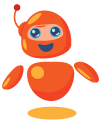1. "C'est"
The expression "C'est" is used to identify or define something or someone.
- C'est un chat. ↔ Ce n'est pas un chat. (It is a cat. ↔ It is not a cat.)
- C'est une pomme. ↔ Ce n'est pas une pomme. (It is an apple. ↔ It is not an apple.)
- C'est une belle journée. ↔ Ce n'est pas une belle journée. (It is a beautiful day. ↔ It is not a beautiful day.)
2. "Il y a + un, une, des"
The expression "il y a un, une, des" is used to indicate the existence of countable items: one, two, three... several.
- Il y a un chat dans le jardin. ↔ Il n'y a pas de chat dans le jardin. (There is a cat in the garden. ↔ There is no cat in the garden.)
- Il y a des pommes sur la table. ↔ Il n'y a pas de pommes sur la table. (There are apples on the table. ↔ There are no apples on the table.)
- Il y a une belle vue depuis la fenêtre. ↔ Il n'y a pas de belle vue depuis la fenêtre. (There is a beautiful view from the window. ↔ There is no beautiful view from the window.)
3. Important Note
In the negative form, "un", "une", and "des" become "pas de", which means a quantity of zero.

